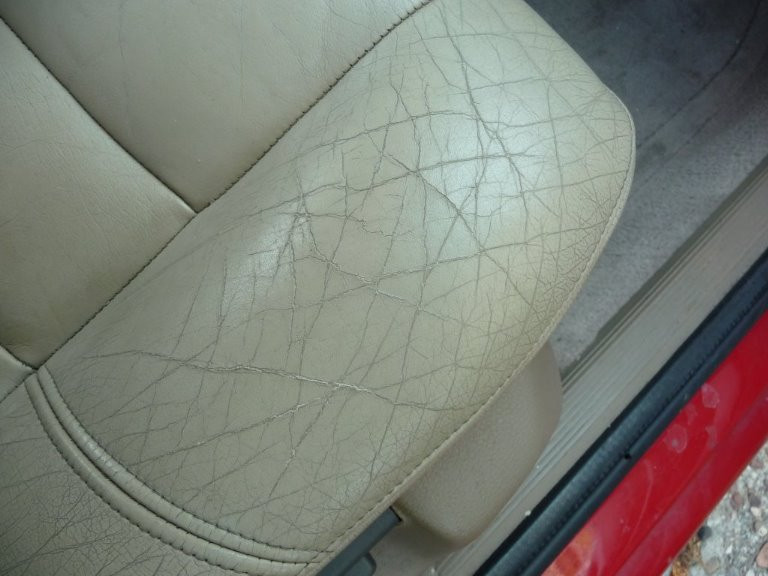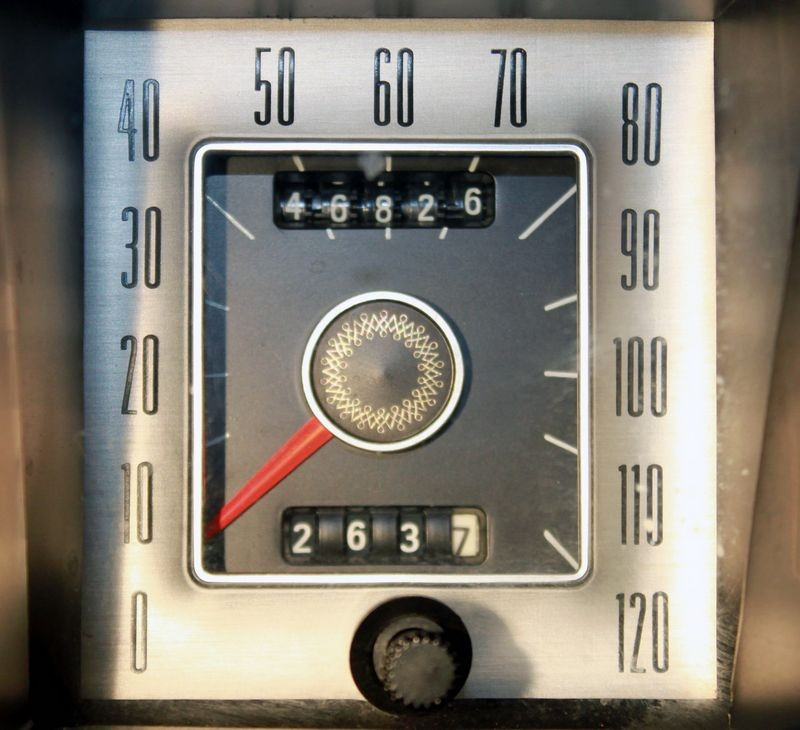How To Fix Car Alarm System: A Comprehensive Guide
Is your car alarm system malfunctioning, leaving you and your neighbors in a state of constant alert? Don’t worry, CARDIAGTECH.NET is here to help. This guide provides a comprehensive breakdown of how to troubleshoot and repair common car alarm issues, ensuring your vehicle’s security and your peace of mind. Learn practical tips, expert advice, and the essential tools you need for a successful car alarm repair, including top-notch auto repair equipment. Get ready to diagnose car alarm problems, perform car security repairs, and understand vehicle alarm troubleshooting like never before.
1. Understanding the Car Alarm System
A car alarm system is a vital security feature designed to protect your vehicle from theft and unauthorized access. By detecting intrusion attempts and triggering an alarm, these systems act as a deterrent and alert the vehicle owner and surrounding individuals.
1.1. Key Components of a Car Alarm System
A typical car alarm system comprises several essential components, each playing a crucial role in its overall functionality.
- Control Module: The brain of the system, managing and controlling various functions.
- Sensors: Detect unauthorized access or movement (door, window, motion, shock).
- Siren/Horn: Emits a loud noise to deter thieves and alert others.
- Remote Key Fob: Enables remote arming, disarming, and panic mode activation.
- Valet Switch: Allows temporary disabling of the alarm for authorized users.
- Wiring and Connectors: Facilitate communication and power supply between components.
1.2. Common Car Alarm System Features
Modern car alarm systems offer a range of features designed to enhance security and convenience.
- Remote Control: Arm, disarm, and control system functions from a distance.
- Smartphone Integration: Control and monitor the system via a smartphone app.
- GPS Tracking: Track the vehicle’s location in real-time.
- Customizable Settings: Adjust sensitivity levels and personalize the system.
2. Diagnosing Car Alarm System Problems
Before attempting any repairs, it’s crucial to accurately diagnose the issue. Common problems include false alarms, failure to arm/disarm, and unresponsive remote key fobs.
2.1. Identifying the Source of False Alarms
False alarms can be incredibly frustrating. Here’s how to pinpoint the cause:
- Check Door and Hood Sensors: Ensure they are properly aligned and functioning.
- Inspect Shock Sensors: Adjust sensitivity settings to prevent triggering from minor vibrations.
- Examine the Battery: Low voltage can cause erratic behavior.
- Review the Wiring: Look for loose connections or corroded wires.
According to the National Insurance Crime Bureau (NICB), faulty wiring and sensitive shock sensors are frequent causes of false alarms.
2.2. Troubleshooting Arming/Disarming Issues
If your car alarm system refuses to arm or disarm, consider these steps:
- Replace the Remote Key Fob Battery: A weak battery can prevent proper communication.
- Resynchronize the Key Fob: Follow the manufacturer’s instructions to resync the fob with the system.
- Check the Valet Switch: Ensure the valet switch isn’t engaged.
- Inspect the Control Module: A malfunctioning control module may require professional attention.
2.3. Remote Key Fob Problems
An unresponsive remote key fob can be a significant inconvenience. Here’s how to troubleshoot:
- Replace the Battery: Always start with a fresh battery.
- Check for Damage: Inspect the fob for physical damage or broken buttons.
- Resynchronize the Fob: Refer to the owner’s manual for synchronization instructions.
- Test the Fob’s Signal: Use a key fob tester to verify signal transmission.
3. Essential Tools for Fixing Car Alarm Systems
Having the right tools is crucial for effectively repairing car alarm systems. CARDIAGTECH.NET offers a comprehensive selection of high-quality tools to meet all your automotive repair needs.
3.1. Must-Have Hand Tools
- Panel Removal Tools: Safely remove interior panels without causing damage.
- Wire Cutter/Stripper: Precisely cut and strip wires without damaging the conductors.
- Soldering Iron/Crimping Tool: Create secure electrical connections.
- Heat-Shrink Tubing/Electrical Tape: Insulate and protect wire connections.
- Multimeter/Voltmeter: Measure voltage, current, and resistance to diagnose electrical issues.
3.2. Diagnostic Equipment
- OBD-II Scanner: Retrieve diagnostic trouble codes (DTCs) to identify system faults.
- Key Fob Tester: Verify the functionality of remote key fobs.
- Wiring Diagram Database: Access comprehensive wiring diagrams for various vehicle makes and models.
3.3. Specialized Tools
- Alarm System Programmer: Reprogram or reset car alarm systems.
- Sensor Calibration Tool: Calibrate sensors for optimal performance.
- Wire Tracker: Locate specific wires within the vehicle’s wiring harness.
4. Step-by-Step Guide to Fixing Common Car Alarm Problems
With the right tools and a systematic approach, you can tackle many common car alarm issues.
4.1. Resetting a Car Alarm System
Resetting the car alarm system can often resolve minor glitches.
- Locate the Reset Button: Consult your owner’s manual to find the reset button, typically located under the dashboard or near the control module.
- Press and Hold: Press and hold the reset button for 5-10 seconds.
- Test the System: Arm and disarm the system to verify the reset was successful.
4.2. Replacing a Faulty Sensor
If a specific sensor is causing issues, replacing it may be necessary.
- Identify the Faulty Sensor: Use a diagnostic tool to pinpoint the problematic sensor.
- Disconnect the Battery: Disconnect the negative terminal of the battery to prevent electrical shock.
- Remove the Old Sensor: Disconnect the wiring and remove the sensor from its mounting location.
- Install the New Sensor: Connect the wiring and secure the new sensor in place.
- Reconnect the Battery: Reconnect the battery and test the system.
Alt: Replacing a faulty door sensor in a car alarm system to ensure proper security
4.3. Repairing Wiring Issues
Faulty wiring can cause a range of problems. Follow these steps to repair wiring issues:
- Inspect the Wiring: Look for damaged, corroded, or loose wires.
- Disconnect the Battery: Disconnect the negative terminal of the battery.
- Repair or Replace Wires: Repair damaged wires with electrical tape or heat-shrink tubing. Replace corroded or severely damaged wires.
- Secure Connections: Ensure all connections are secure and properly insulated.
- Reconnect the Battery: Reconnect the battery and test the system.
4.4. Replacing the Control Module
If the control module is malfunctioning, replacing it may be the only solution.
- Locate the Control Module: Find the control module, typically located under the dashboard or in the center console.
- Disconnect the Battery: Disconnect the negative terminal of the battery.
- Disconnect the Wiring: Disconnect all wiring harnesses from the control module.
- Remove the Old Module: Remove the control module from its mounting location.
- Install the New Module: Install the new control module and reconnect the wiring harnesses.
- Reconnect the Battery: Reconnect the battery.
- Program the New Module: Follow the manufacturer’s instructions to program the new control module.
5. Advanced Troubleshooting Techniques
For more complex issues, advanced troubleshooting techniques may be required.
5.1. Using an Oscilloscope for Signal Analysis
An oscilloscope can be used to analyze the signals within the car alarm system, helping to identify faulty components or wiring.
- Connect the Oscilloscope: Connect the oscilloscope probes to the appropriate test points in the system.
- Analyze Waveforms: Analyze the waveforms to identify any abnormalities or signal distortions.
- Identify Faulty Components: Use the signal analysis to pinpoint the source of the problem.
5.2. Decoding Diagnostic Trouble Codes (DTCs)
OBD-II scanners can retrieve diagnostic trouble codes (DTCs) that provide valuable information about system faults.
- Connect the Scanner: Connect the OBD-II scanner to the vehicle’s diagnostic port.
- Retrieve DTCs: Retrieve the DTCs from the system.
- Decode the DTCs: Use a DTC lookup tool to decode the DTCs and identify the corresponding faults.
- Troubleshoot the Faults: Follow the troubleshooting procedures for the identified faults.
5.3. Testing Communication Protocols
Car alarm systems often use communication protocols such as CAN bus to communicate with other vehicle systems. Testing these protocols can help identify communication issues.
- Connect a CAN Bus Tester: Connect a CAN bus tester to the vehicle’s CAN bus network.
- Monitor Communication Traffic: Monitor the communication traffic to identify any errors or disruptions.
- Troubleshoot Communication Issues: Follow the troubleshooting procedures for any identified communication issues.
6. Preventing Future Car Alarm Problems
Preventive maintenance can help avoid future car alarm issues and keep your system functioning optimally.
6.1. Regular Maintenance Tips
- Inspect Wiring Regularly: Check for damaged, corroded, or loose wires.
- Test Sensors Periodically: Verify the functionality of all sensors.
- Replace Batteries as Needed: Replace batteries in remote key fobs and sensors as needed.
- Keep the System Clean: Clean the system components to prevent dust and debris buildup.
6.2. Upgrading Your Car Alarm System
Consider upgrading your car alarm system to take advantage of the latest features and technologies.
- Smartphone Integration: Upgrade to a system with smartphone integration for remote control and monitoring.
- GPS Tracking: Add GPS tracking for real-time vehicle location.
- Advanced Sensors: Install advanced sensors for enhanced security.
6.3. Professional Inspections
Schedule periodic professional inspections to ensure your car alarm system is functioning correctly.
- Certified Technicians: Seek out certified technicians with experience in car alarm systems.
- Comprehensive Inspections: Request comprehensive inspections that cover all system components.
- Preventive Maintenance: Follow the technician’s recommendations for preventive maintenance.
7. Choosing the Right Car Alarm System
Selecting the right car alarm system is crucial for ensuring the security of your vehicle. Consider the following factors when choosing a system:
7.1. Types of Car Alarm Systems
- Entry-Level Systems: Basic systems that provide audible alarms and door monitoring.
- Mid-Range Systems: Offer additional features such as remote start and keyless entry.
- High-End Systems: Include advanced features like GPS tracking, smartphone integration, and two-way communication.
7.2. Key Features to Consider
- Sensitivity Adjustment: Ability to adjust the sensitivity of sensors to prevent false alarms.
- Remote Start: Remote start functionality for added convenience.
- Keyless Entry: Keyless entry for easy access to your vehicle.
- GPS Tracking: GPS tracking for real-time vehicle location.
- Smartphone Integration: Smartphone integration for remote control and monitoring.
7.3. Reputable Brands
Choose a car alarm system from a reputable brand known for quality and reliability.
- Viper: A leading brand in car security systems.
- Python: Offers a range of advanced security features.
- Clifford: Known for high-end security systems.
- Avital: Provides affordable and reliable security solutions.
8. The Importance of Professional Installation
While it’s possible to install a car alarm system yourself, professional installation is often the best choice.
8.1. Expertise and Experience
Professional installers have the expertise and experience to ensure the system is installed correctly and functions optimally.
- Proper Wiring: Ensure all wiring connections are secure and properly insulated.
- Optimal Sensor Placement: Place sensors in optimal locations for maximum effectiveness.
- System Configuration: Configure the system for your specific vehicle and needs.
8.2. Warranty Protection
Professional installation may be required to maintain the warranty on your car alarm system.
- Authorized Installers: Use authorized installers to ensure warranty coverage.
- Proper Documentation: Keep documentation of the installation for warranty purposes.
8.3. Avoiding Installation Errors
Professional installation can help you avoid common installation errors that can compromise the system’s effectiveness.
- Incorrect Wiring: Avoid incorrect wiring that can cause system malfunctions.
- Improper Sensor Placement: Ensure sensors are placed in optimal locations.
- System Compatibility: Verify the system is compatible with your vehicle.
9. Understanding Car Security Measures Beyond Alarms
Enhancing car security involves more than just installing an alarm system.
9.1. Steering Wheel Locks
Steering wheel locks are physical deterrents that make it difficult for thieves to steer the car.
- Visible Deterrent: Act as a visible deterrent to potential thieves.
- Physical Barrier: Create a physical barrier that makes it difficult to steer the car.
9.2. Kill Switches
Kill switches disable the vehicle’s ignition or fuel system, preventing it from being started.
- Hidden Location: Install the kill switch in a hidden location.
- Disable Ignition or Fuel: Disable the ignition or fuel system to prevent the car from being started.
9.3. Window Tinting
Window tinting can make it more difficult for thieves to see inside the car, deterring them from breaking in.
- Reduce Visibility: Reduce visibility into the car’s interior.
- Deter Break-Ins: Deter thieves from breaking into the car.
9.4. Park Smart
Park in well-lit and populated areas to reduce the risk of theft.
- Well-Lit Areas: Park in well-lit areas where thieves are less likely to operate.
- Populated Areas: Park in populated areas where there are more witnesses.
10. Legal Considerations for Car Alarm Systems
Before installing or modifying your car alarm system, it’s important to be aware of any legal considerations.
10.1. Noise Ordinances
Check local noise ordinances to ensure your car alarm system complies with noise level restrictions.
- Maximum Decibel Levels: Be aware of maximum decibel levels for car alarms.
- Alarm Duration Limits: Follow alarm duration limits to avoid noise violations.
10.2. False Alarm Penalties
Many jurisdictions have penalties for excessive false alarms.
- Registration Requirements: Register your car alarm system with local authorities.
- False Alarm Fees: Be aware of fees for excessive false alarms.
10.3. Tampering Laws
It is illegal to tamper with or disable a car alarm system without authorization.
- Unauthorized Modifications: Avoid unauthorized modifications to the system.
- Professional Service: Use professional service providers for repairs and modifications.
In summary, car alarm systems are more than just noise-makers; they’re intricate security devices that require proper maintenance and understanding. By following this guide, you’re well-equipped to troubleshoot and fix common issues, ensuring your vehicle remains protected. Remember, CARDIAGTECH.NET is your go-to source for all the tools and equipment you need for successful auto repairs.
Are you struggling with persistent car alarm issues and need expert advice? Contact CARDIAGTECH.NET today at 276 Reock St, City of Orange, NJ 07050, United States, or reach out via WhatsApp at +1 (641) 206-8880. Visit our website at CARDIAGTECH.NET for a wide range of automotive tools designed to make your repair tasks easier and more efficient. Our team is ready to assist you with any questions or concerns you may have, ensuring you get the right tools for the job.
FAQs About Car Alarm Systems
Can I install a car alarm system myself?
Yes, you can install a car alarm system yourself if you have the necessary tools and technical skills. However, professional installation is recommended to ensure proper functionality and avoid potential issues.
How much does a car alarm installation cost?
The cost of car alarm installation varies depending on the complexity of the system and the installer’s rates. On average, expect to pay between $150 and $500 for professional installation.
How long does it take to install a car alarm system?
A standard car alarm installation can take anywhere from 2 to 6 hours, depending on the complexity of the system and the installer’s experience.
Do car alarm systems really deter thieves?
Yes, car alarm systems can be effective in deterring thieves, especially when combined with other security measures such as steering wheel locks and GPS tracking systems.
What are the most common causes of false alarms?
Common causes of false alarms include faulty sensors, low battery voltage, and incorrect sensitivity settings.
How do I reset my car alarm system?
To reset your car alarm system, locate the reset button (usually under the dashboard) and press and hold it for 5-10 seconds. Refer to your owner’s manual for specific instructions.
What is a valet switch, and what does it do?
A valet switch allows you to temporarily disable the car alarm system, such as when you leave your car with a valet or mechanic.
How do I resynchronize my remote key fob?
Refer to your owner’s manual for instructions on how to resynchronize your remote key fob. The process typically involves pressing a sequence of buttons on the fob and the ignition.
What should I do if my car alarm keeps going off for no apparent reason?
If your car alarm keeps going off for no apparent reason, check the sensors, battery voltage, and sensitivity settings. If the problem persists, consult a professional installer.
Are there any legal restrictions on car alarm systems?
Yes, there may be legal restrictions on car alarm systems, such as noise ordinances and penalties for excessive false alarms. Check your local laws for specific requirements.





